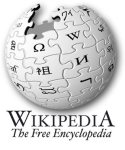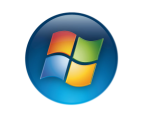MODULE
Network aesthetics looks at the function and aesthetics of collaboration and community in networked environments – in particular on the internet.
Aims & Outcomes
- You will analyse different approaches and applications of networked technology to the production of digital artefacts by examining examples from different artists
- You will evaluate cultural, aesthetic and ideological differences with regards to
digital communication. - You will analyse issues relating to globalisation, regionalism and cultural identity
- You will present your findings in an appropriate digital form that relates specifically to the questions raised through the analysis of culture, technology, art and identity in a networked context.
After our new tutor introduced himself to us, we discussed how the world is changing and seems to be moving from the physical world to the digital one and how the improvement of technology has brought about new medium of communication. We are able to share thoughts and communicate without having to leave the solidarity of our room and thanks to software such as Skype, you are able to contact family & friends from across the world. Nowadays, we seem to have a cultural identity as well as a digital one.
“Think about what people are doing on Facebook today. They’re keeping up with their friends and family, but they’re also building an image and identity for themselves, which in a sense is their brand. They’re connecting with the audience that they want to connect to. It’s almost a disadvantage if you’re not on it now.”
Mark Zuckerberg
THE INTERNET & WORLD WIDE WEB
When our tutor asked how many of us knew the difference between the Internet & World Wide Web, I was surprised at how many of us actually couldn’t answer what seemed like such an obvious question. Seeing as no one seemed to know, our tutor went on to explain how the internet is the infrastructure that allows us to use the World Wide Web and that without it, we wouldn’t be able to access it. He compared the internet to a road and the WWW to a car and how you can’t drive your car to, let’s say Brighton, without there being a road to allow you to get there.
We then moved on to trying to mention all the different ways throughout the years this information was transmitted and moved from place to place.
1- Phone Masts (BT Telephone Lines)
2- Copper Cables
3- Satellite
4- Fiber Optics
OPEN ARCHITECTURE
The difference between the above two is that open source allows you make changes and manipulate code whilst closed source doesn’t. Obviously the expeience is different for each of them, however is one better than the other? Is an open source more open to hackers than a closed source which could potentially be more guarded?
SOCIAL NETWORK ASSIGMENT
Social Networks such as Facebook, Instagram and Twitter have all been very successful – but why? What has made them more successful than others? Is it because they’re very user friendly? Are they more aesthetically pleasing than others? For our first assignment, our objective is to create a concept for a social network keeping in mind all of questions and then presenting it to the whole class.
Some points our tutor asked us to keep in mind also are:
- A theme
- The type of audience we are targeting
- Copyright





